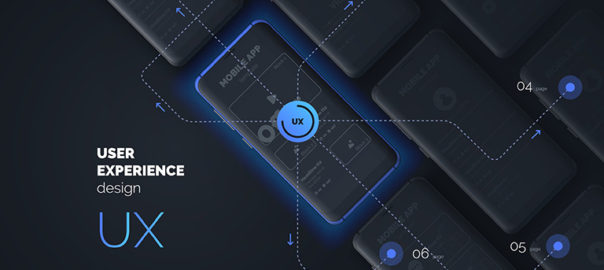The expectations of users over the web and mobile apps has risen exponentially. A vast majority of users are unlikely to return to a website after one bad experience. There’s massive importance of user experience in website design – UX Basics, and the conversion rate of any website is directly proportional to how good is its user experience.
User experience (UX) is the wholesome experience a visitor has on a website or in a mobile app. It is a complete compilation of various small interactions knitted together, producing positive or negative feelings about the website and the brand. It’s not just a single design element or layout that defines the experience. The connection that visitors feel and the experience they receive on a website, as a result of the UX design, directly impacts consumer retention, brand identity, and the business as a whole.
A research conducted by Stanford University suggested that over 46 percent of consumers consider website design as an indicator of credibility. The fact is crucial for brands to secure existing users and captivate new consumers.
The following three UX design tips will help you improve your UX Basics, increase conversions and revenue, and will boost your business.
1. Branding must be consistent
There have been ample studies conducted to study the correlation between consistent branding and revenue. These studies suggest that consistent branding can boost revenue by a substantial amount. Moreover, a connected visual identity across all the platforms and devices, including the website, will help in creating a brand that consumers love to engage with. If users enjoy engaging with your brand, they will come back to you, again and again.
This cohesive visual identity(UX Basics) is pretty simple to reproduce. The top website designs use a recognizable color palette, consistent typography, imagery that provides value and information, and ingenious branding on every page of the website. The consistency in branding creates a balanced environment that allows your users to look for, and find, the products or information they seek; that too, without diverting their attention or confusing them. Users are aware of where they are, what to expect, and they can determine what they wish to do.
Amazon is an excellent example of consistent branding and a delightful user experience design. The modern yet simple logo design and an easy-to-use website add to the user-friendliness of the website and its mobile app. Users can quickly search, easily access their profile and cart, and quickly find their way back to the homepage, in case they go too deep into the thousands of pages on the website.
Read More about tips to boost your brand
This simple, consumer-centric, clean design is branded in its messaging too. Every piece of Amazon’s marketing collateral, from commercials to social media posts to banner ads, speak the same language.
2. Use clear and precise calls to action
If you want something to happen, you need to take action and go for it. It is only one part of the user journey to get them on your website. Many users won’t have a clue of the action you want them to take until you make it crystal clear to them. You should use distinct, clear and precise calls to actions (CTAs) with direct language.
Follow these UX Basics to maximize the UX design and the effectiveness of a CTA button:
- Use large and fully clickable buttons. Don’t just depend on the text within the button
- Write clear, easy to understand copy. It can be witty and playful at times, but most importantly, users should immediately understand the action.
- Include a verb or an urgent adjective.
- Keep the whole CTA short and sweet.
- The font itself should be readable and large.
- Avoid playing with any trendy, swirling fonts. Stick to straightforward sans-serif typography.
- Ensure the call to action stands out. Stick to your color palette and use a hue or unique shape so that the action stands out.
- Include small complementary design elements, such as an arrow or a shopping cart if it is in line with.
- Utilize white space to allow the messages to breathe.
Read More about designing your CTA Buttons
3. Be user-centric, not designers-centric
Remember that the consumers will be using your website and not the designers. Therefore, before adding any features or implementing any changes, designers should first walk through what that means for the user experience and customer journey.
After you conduct consumer research, you and your team will better understand the features. You can segregate the features into two categories. The ones that are most important for users and the ones that are less important. no matter how aesthetically appealing they may be.
Finally, once you design any UX design improvement, take the time to A/B test it. A/B testing of the new feature will ensure that it is functional and leads to better conversions. Studies show that most companies discover the best conversion rate optimization through A/B testing as opposed to total implementation.
Ultimately, investing in user experience design will provide a strong return on investment down the road. Want to increase the user experience of your website? Need help to improve conversion rate and revenue? Talk to our design experts.



